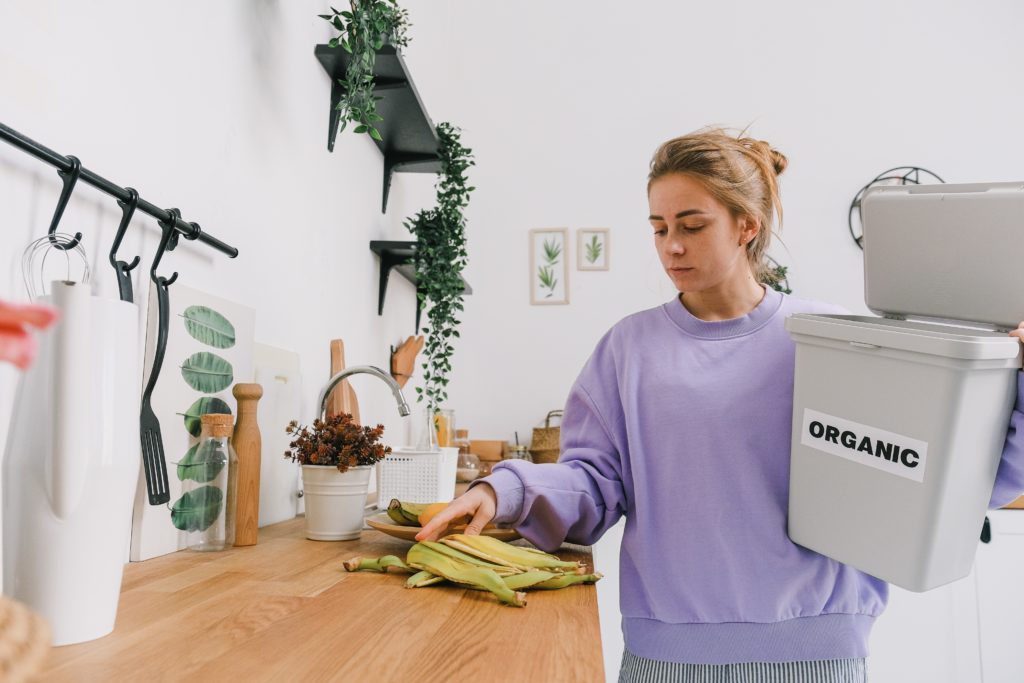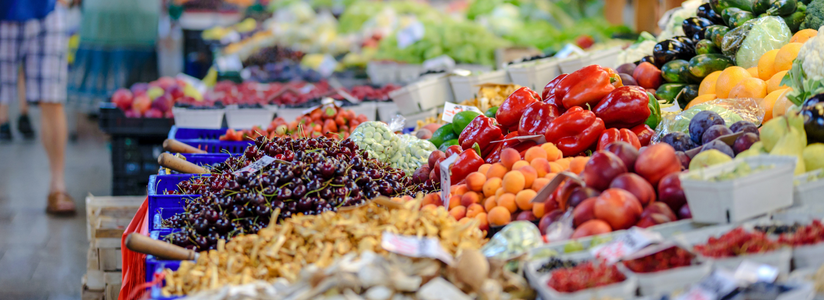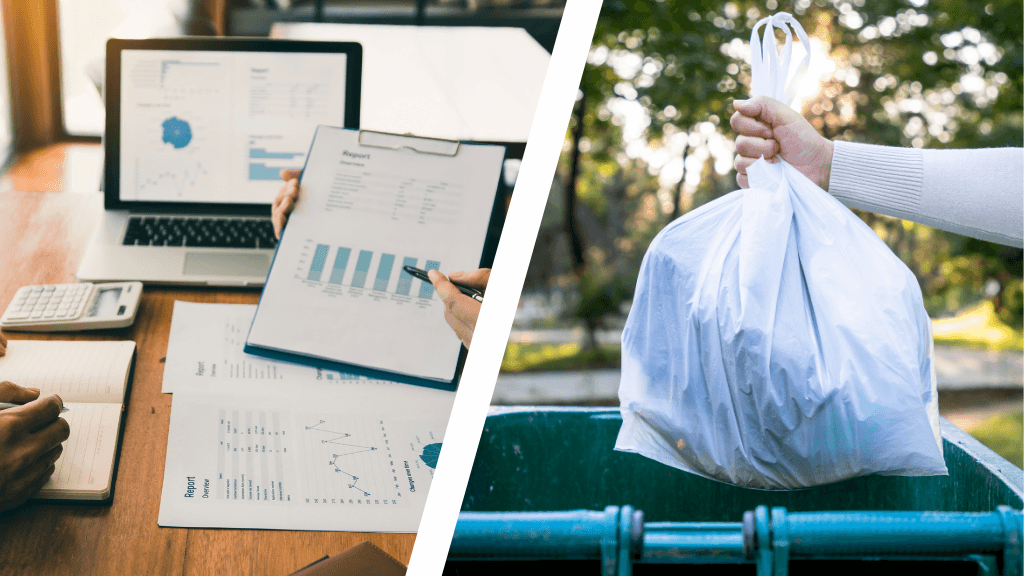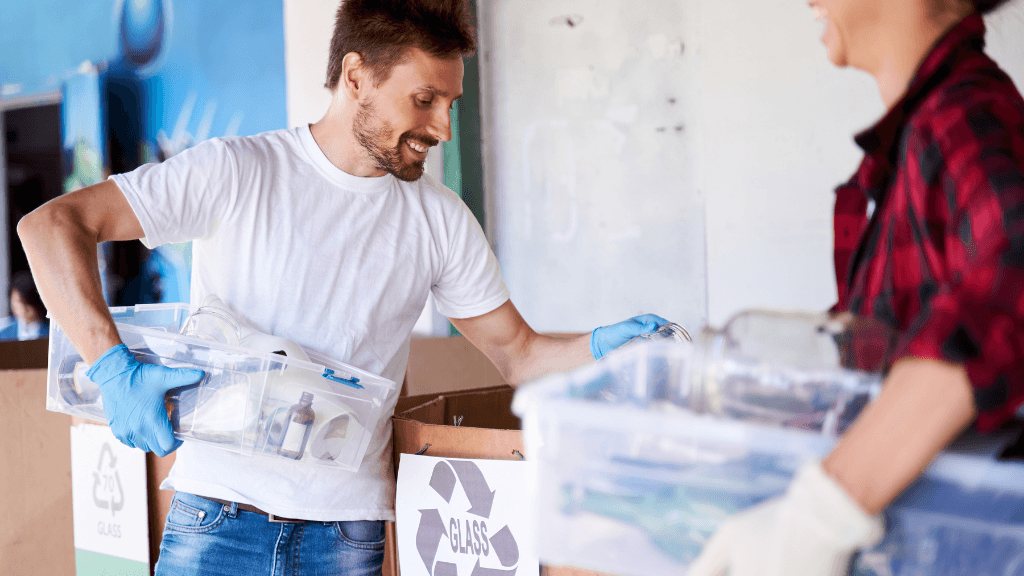Picture this: It’s your favourite holiday, and you are surrounded by the ones you love most.
Sitting around the dinner table, you’re sharing old memories, laughing along, and catching up on one another’s lives. Then, in comes the star of the show … A perfectly roasted turkey is placed at the centre of the table. The aroma is intoxicating, and the side dishes are masterpieces … a feast for not just your stomach, but your eyes. You’re about to dive in, but just a split second before you reach out to start serving your plate, the host interrupts you ….
“Before we get started eating, don’t forget, we have to toss half the food!”
You look at them quizzically. Huh?
But without hesitation, they begin taking just over half of every dish and tossing it into a garbage bin.
You utter the only word you can think of, proclaiming it in disbelief: “WHY?”
The host looks at you and shrugs, before answering: “Over half our food is wasted in Canada and sent to landfill. We wouldn’t want to go against the status quo, would we? At least, not on the holidays.”
Your eyes nearly bulge out of your head at hearing this. We can’t possibly send more than half our food to landfill, can we?

Sadly, it’s true. Although it may not happen exactly how described in this hypothetical scenario, it is true that from production to consumption, Americans are wasting a massive amount of our food. While it certainly isn’t as simple as scraping food off our plates, directly into the waste bin, each of us can still play a role in making a difference. Keep reading to learn more.
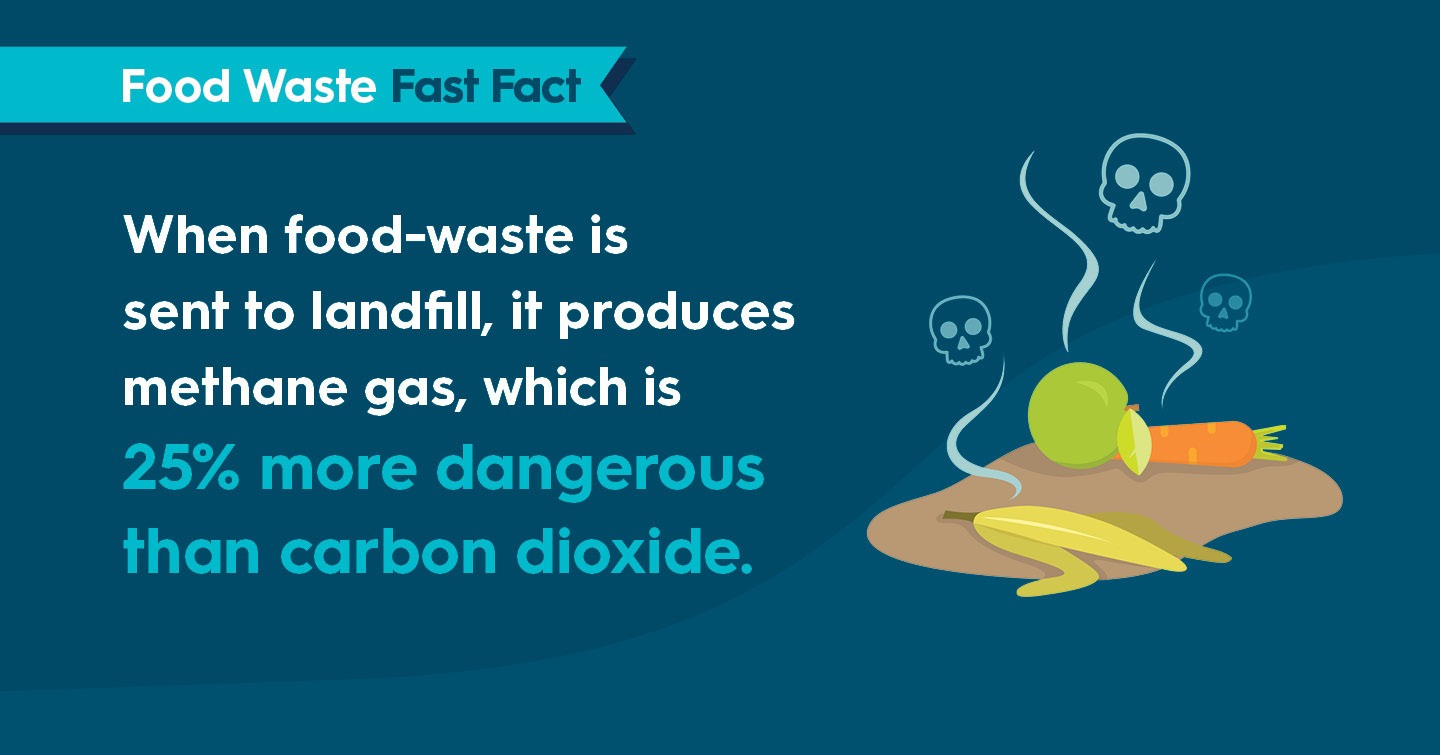
What is food waste?
Food-waste is what happens when food, or the ingredients to make it, end up being disposed of. This happens in every stage of the supply chain, from production, to consumption, and has a detrimental impact on both our environment and economy here in this country.
From food that is tossed in the supermarket, for not meeting aesthetic guidelines (think an oddly shaped pear), to leftovers scraped off plates in the dish pit of a bustling restaurant, to food that sits in our home refrigerators until well passed its “Best Before” date when we finally see it, and toss it into the bin, food-waste is happening every single day. It is up to us to make a change.
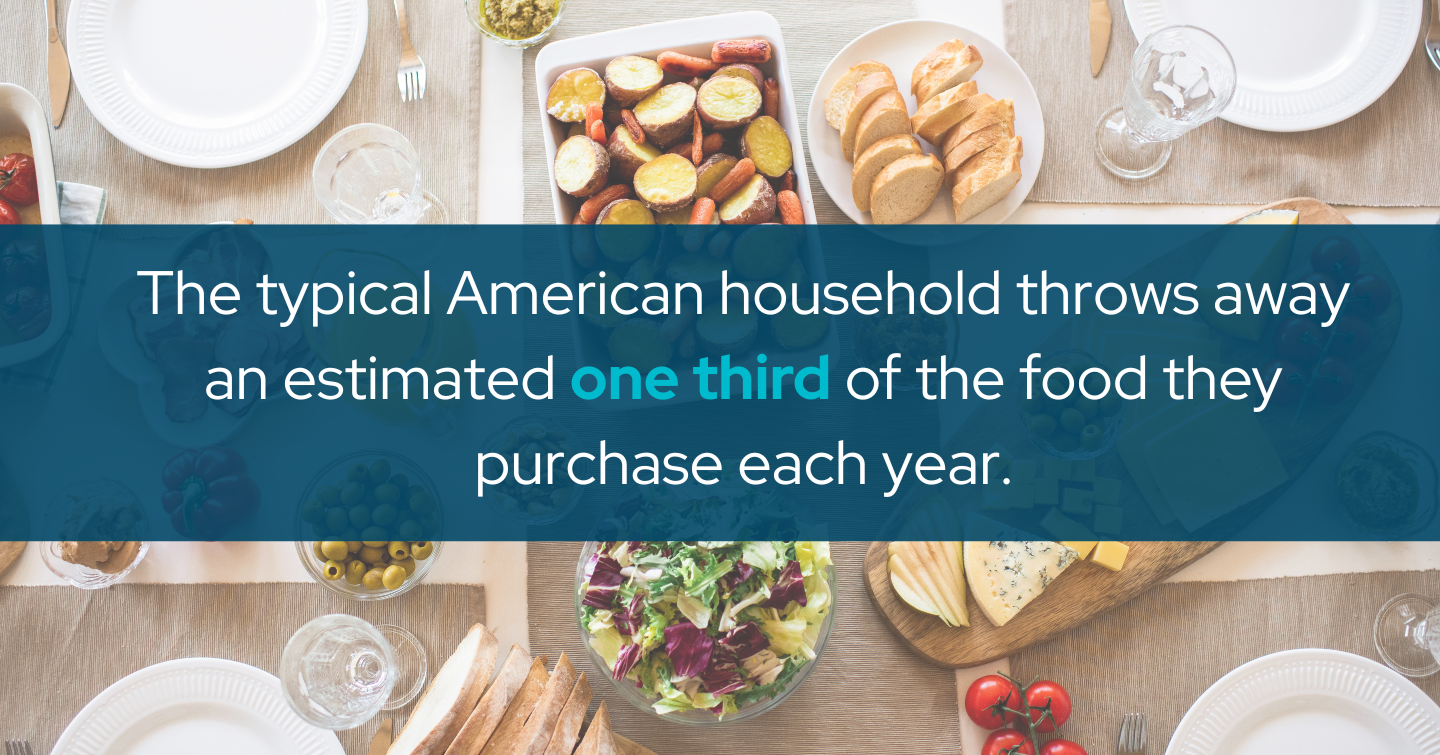
How much of our food ends up in landfill in America?
In the United States, approximately 40% of the food we produce ends up in landfill. This equates to approximately 219 pounds of food waste per person each year. Sadly, this is even higher than the global rate, which estimates that one third of the food we produce is wasted.
Ideally, if food waste must be disposed of, it should be processed through an alternative disposal method. Unfortunately, for the bulk of American food waste, that is not the case, with an estimated 1/4 of municipal solid waste being composed of organic material. This means, most of the food that we are scraping from our plates is ending up in landfill.
While at first glance, the idea of food-waste being buried back into the same earth from which it was grown might not seem so bad, it’s important to recognize that a landfill is not an appropriate environment for food-waste to decompose.
In order for organic material to properly decompose, we must be able to control three key factors:
- Temperature
- Oxygen
- Moisture
In a landfill environment, we have no control over any of these. The food waste is buried under other solid waste, where it sits and slowly rots for many, many years.
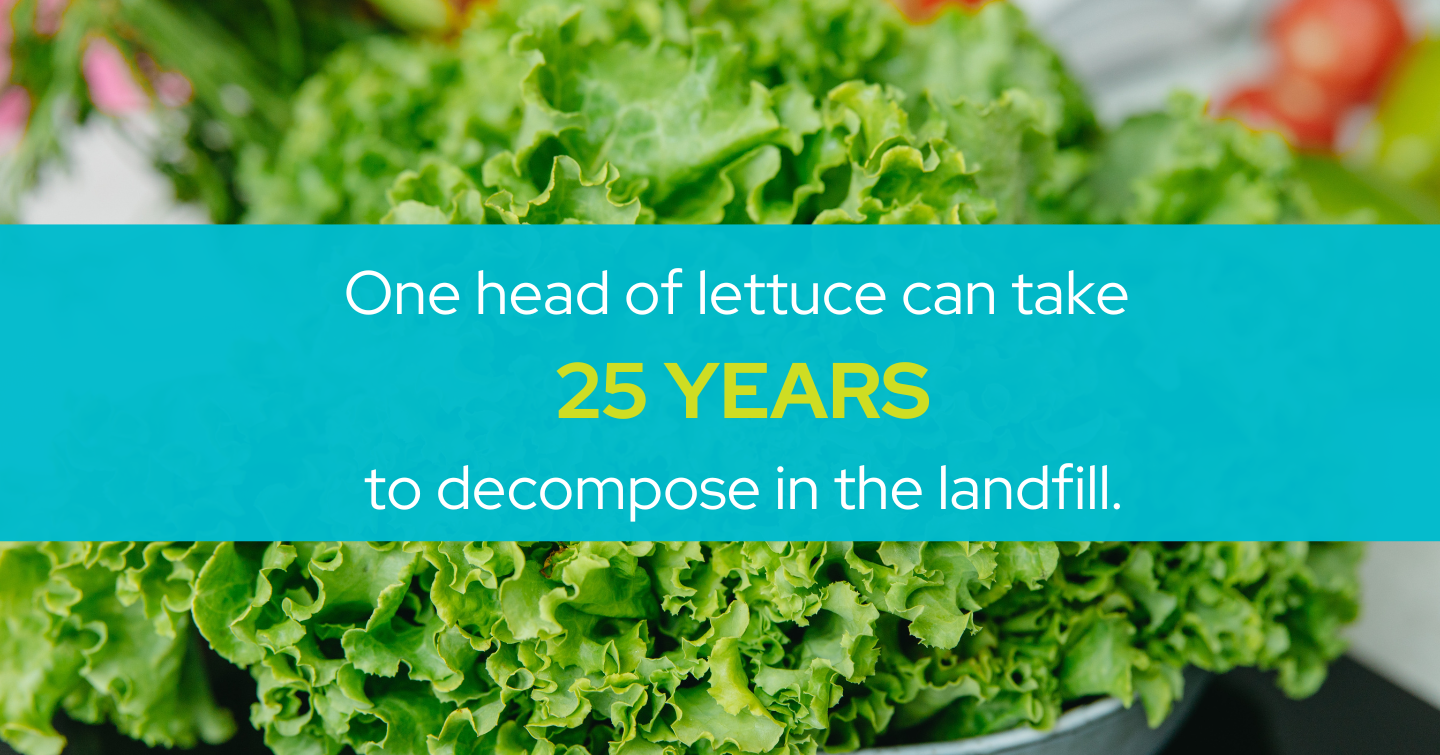
In fact, one single head of lettuce can take up to 25 years to decompose in landfill. When food-waste is buried by garbage and other materials, it takes much longer to biodegrade than nature intended, using up limited space in our landfills, producing methane gas, and taking away from the invaluable opportunity we have to divert this material into compost production.
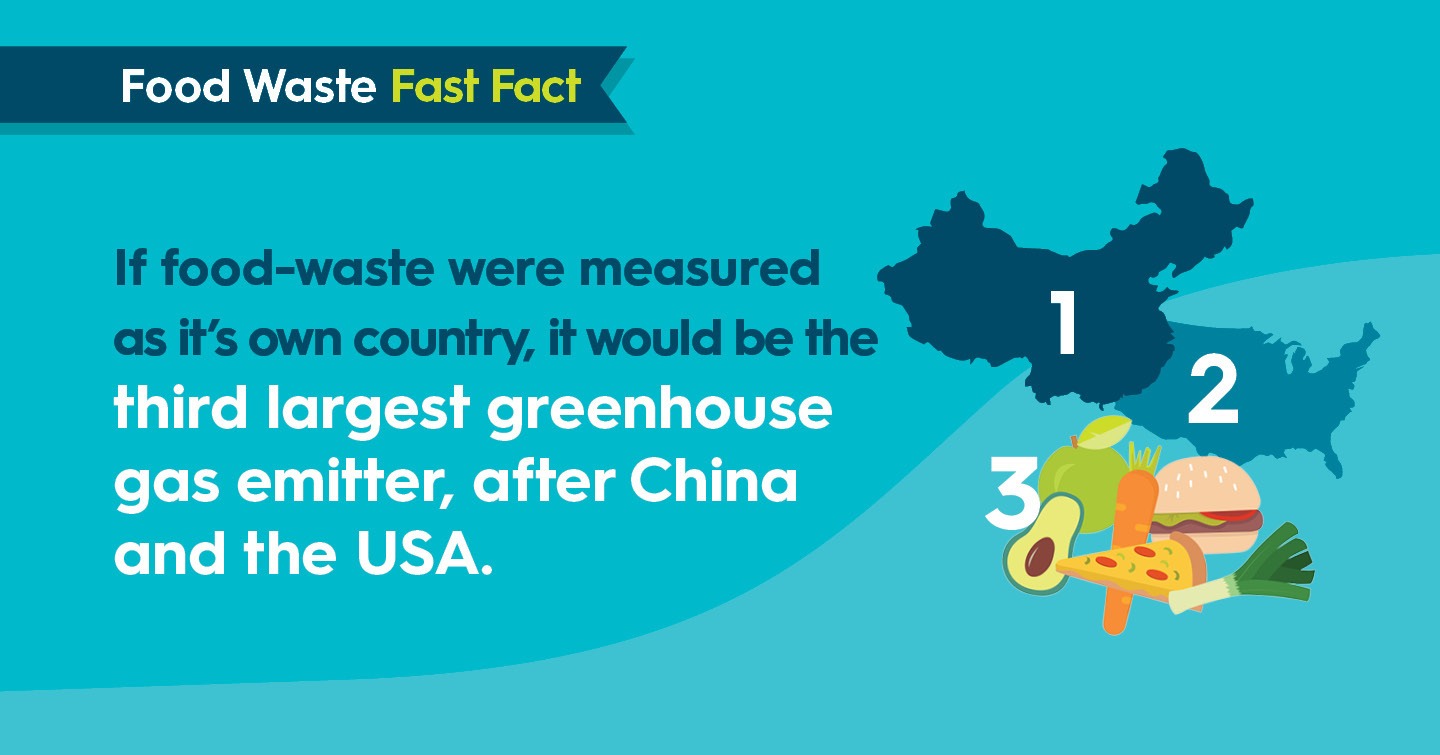
Why does food-waste happen?
If food-waste was simply limited to the food we scrape from our plates at the end of a meal, it would be a much easier problem to solve. However, the reality is that food-waste is a much more complex issue than that. Food is lost during every phase of the supply chain, from production to consumption.
While it may be our first instinct to blame consumers for the problem of food waste, the truth is 40% of the food that is wasted in America is caused further up in the supply chain.
Within the food supply chain, we see food lost at the production level with field losses due to crop failures, labor shortages, and more.
During transportation and distribution we see food loss occur due to improper storage, refrigeration, and packaging methods. We also see distributors reject produce for cosmetic reasons, even when the nutritional value of the food has not been compromised.
Further down the supply chain, we see massive amounts of food loss occur in the retail setting. Retailers will overstock shelves, aiming for an appearance of abundance, in order to promote higher volume purchases from their customers.
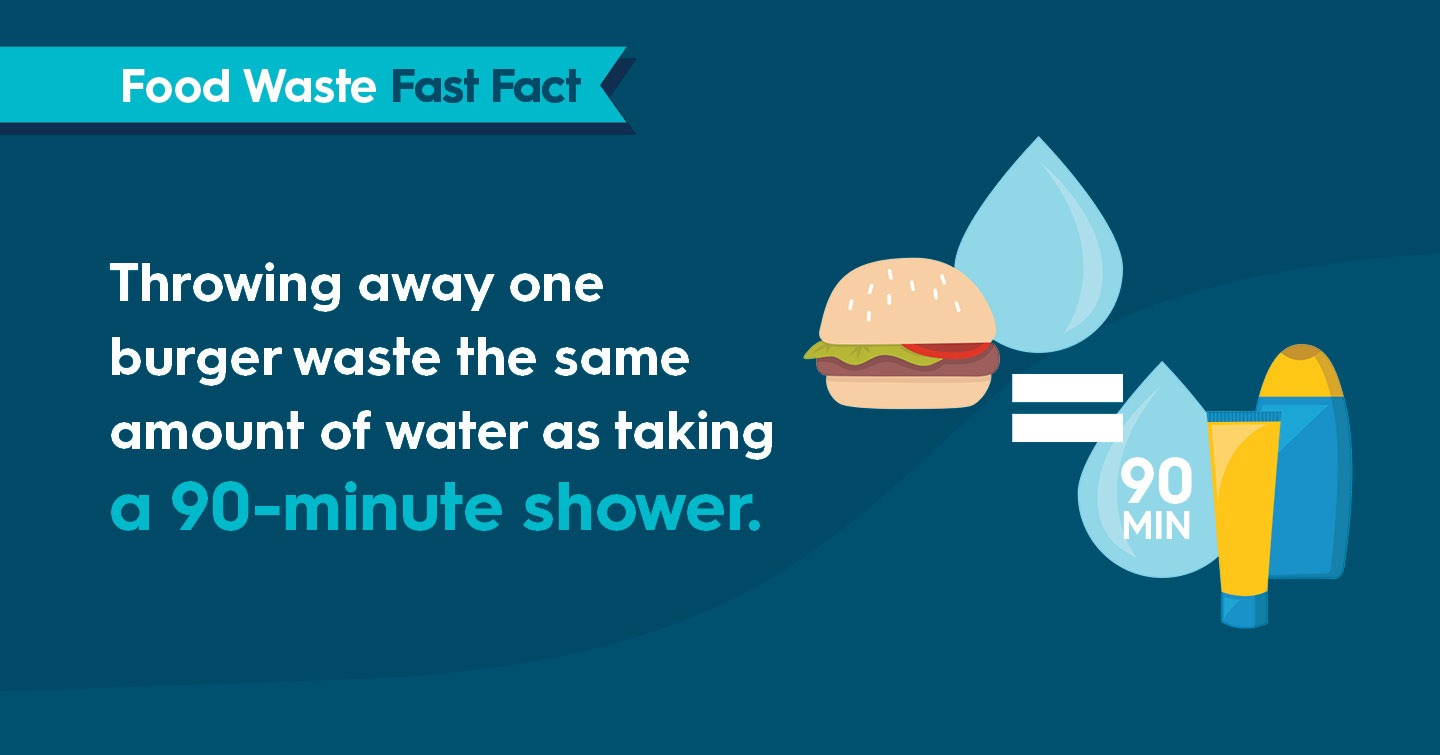
What is the environmental impact of food waste?
As we work to reduce food waste, it is important that we shift our perspective on it, and consider it not as ‘waste,’ but as a valuable resource. Often, wasted food could be used to feed humans or animals, processed to create energy, or to create nutrient rich compost. However, in our linear economy, it is all too often thought of as ‘garbage’ and sent to landfill, where it slowly rots for years to come. Undeniably, this comes with severe environmental impacts.
Each year, food waste in the United States creates approximately 14.1 percent of the methane gas emissions related to human activity. When we consider the impact of food-waste on the climate crisis, this cannot be overlooked. In fact, methane which is produced by food rotting in landfill is 25 times more powerful a greenhouse gas than carbon dioxide.
On a global level, food-waste is responsible for 30% of all human-caused greenhouse gas emissions, meaning that nearly 1/3 of the greenhouse gas that we are directly responsible for is caused by food that could have been diverted from landfill.
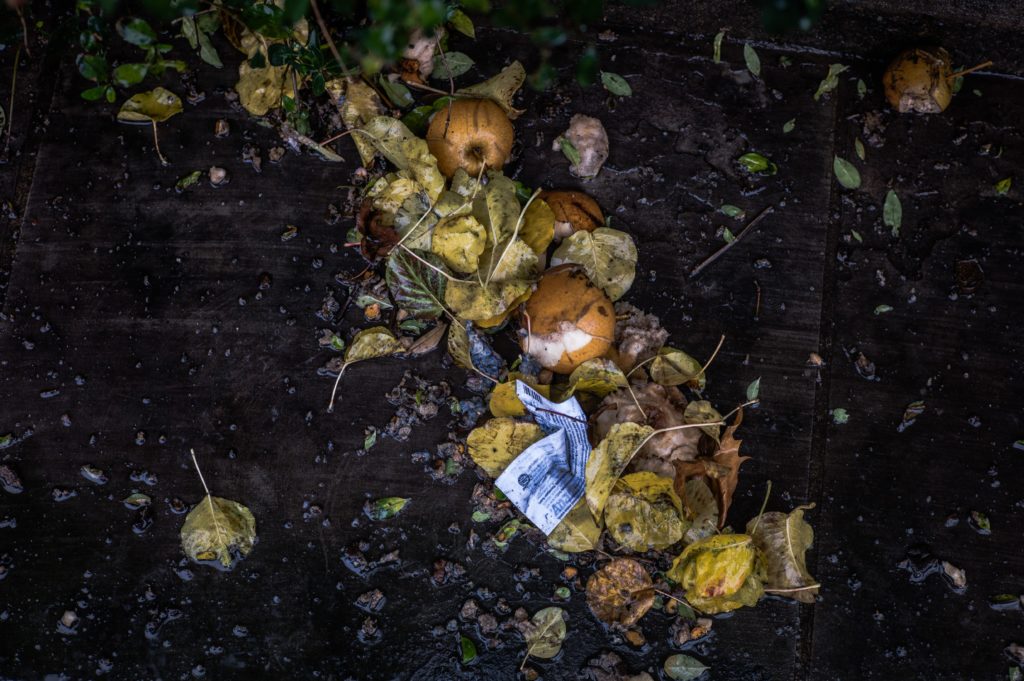
What is the economic impact of food waste?
With 40% of food being wasted in the USA each year, the annual economic cost is an estimated $218 billion or 1.3% of the GDP. The economic impact of food-waste may seem insurmountable at these rates, but the truth is that an effective reduction strategy including tax credits and landfill bans can be successful.
While it’s not possible to measure the exact economic benefit of diverting food waste to programs to feed hungry people, we do know that programs that benefit families who are struggling to put food on the tables will have a larger positive socio-economic impact over time.
Another economic benefit of diverting food-waste away from landfill is job creation. Waste diversion efforts such as recycling, and compost create 9 times more jobs than sending material to landfill. This is achieved through the additional collection, processing, and production processes. When food-waste is used to create a valuable resource such as compost, it can be reused, thus contributing to the circular economy.
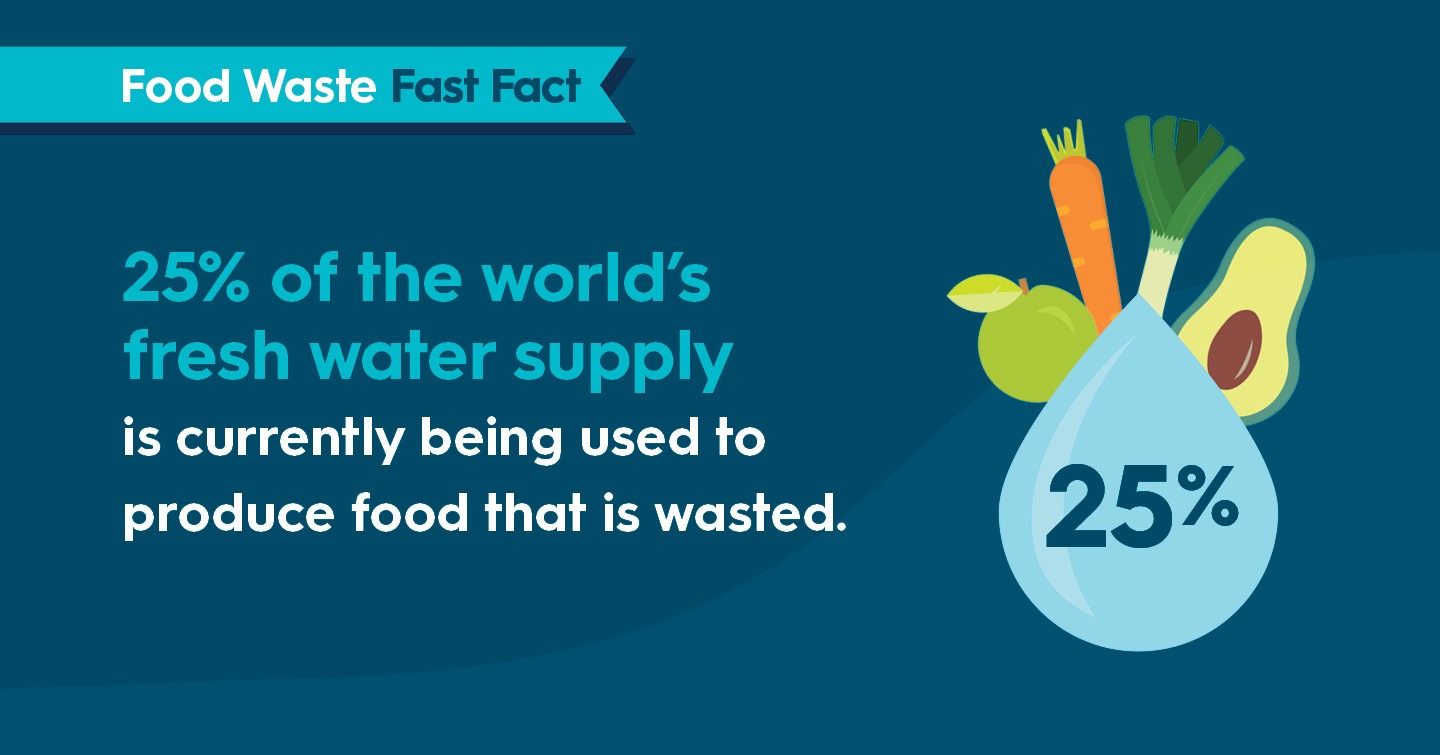
How can we reduce food waste?
When we look at the source of food-waste, we learn that there is an opportunity to minimize food waste during every face of the supply chain. Taking action to reduce food waste requires a strategic approach, which is where the Food Waste Recovery Hierarchy comes in. The United States Environmental Protection Agency (The EPA) created this hierarchy, which is now widely accepted on a global level as the best approach to minimizing food waste. Each tier represents the preferable strategy that we should be taking in recovering food-waste and preventing food loss.
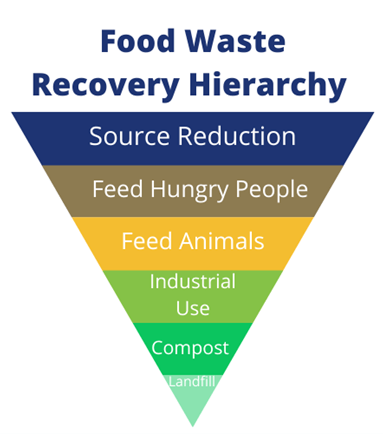
The highest tier of the hierarchy is represented by source reduction. In food production, this can encompass reducing the food that is rejected due to cosmetic abnormalities. In our homes, this can look like repurposing leftovers, instead of tossing them into the bin.
After we’ve made every effort to reduce food-waste at the source, the second most favourable option for food recovery is to feed hungry people. This is typically achieved by donating food that will not be otherwise consumed to charitable organizations such as food banks or food share programs.
The third tier of the hierarchy is to feed animals. A popular example we see that would fall into this category is when breweries donate their spent grains to farmers which, are often used to feed livestock such as pigs. While many farms have strict regulations on what foods their animals are able to eat and this is not always an option, it is an important opportunity for food waste reduction that should still be prioritized.
The fourth and following approach for food waste recovery and reduction is industrial use. This encompasses providing waste oils for rendering and fuel conversion and using food scraps for digestion to recover energy. This is most typically achieved through a process known as anaerobic digestion, which is a process, where microorganisms break down organic materials (in this case, food scraps), in the absence of oxygen. The end product is biogas, and a soil amendment. Of course, industrial use is not an option that consumers can actively participate in their own . However, working with municipalities and other levels of government, we can encourage innovative investment in these technologies, so that food-waste can be collected at the curb alongside waste and recycling, and sent to an industrial facility for processing.
The fifth tier of the Food-Waste Recovery Hierarchy is compost. Compost is a soil amendment created by managing oxygen, temperature, and moisture levels in food waste biodegradation, typically combined with a bulking agent (ex: saw dust, woodchips etc.). Many municipalities offer residential food-waste collection, however in areas where this is unavailable, consumers do have the option to consider creating a home compost system as well. Compost can be created using traditional digestion methods in the backyard, or by utilizing new kitchen technologies that will quickly create a natural soil amendment using your food scraps. These technologies implement the use of a small countertop composting appliances that can be used in your home kitchen. Compost is often referred to as “black gold” and is a fantastic way to use food scraps to nourish the earth, participating in the circular economy.
Lastly, the sixth and final option for food waste management is landfill. Ultimately, we want to avoid sending food waste and other organic materials to landfill as much as possible. This is a last resort, only to be considered when all other tiers of the food waste recovery hierarchy have been exhausted.
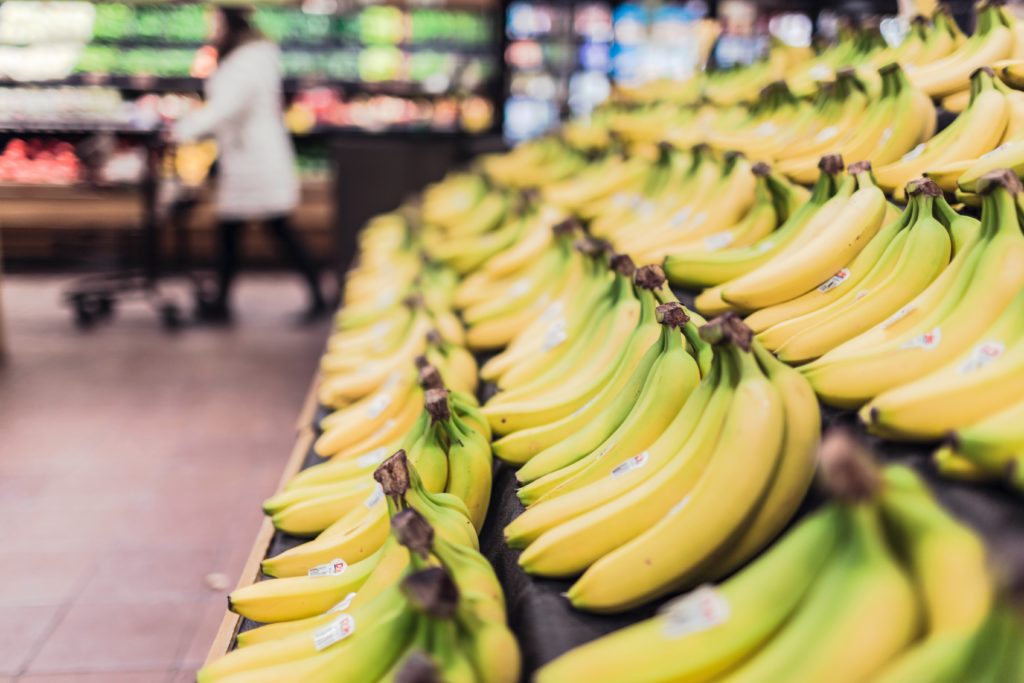
How are we making a change at Waste Solutions?
Our team at Waste Solutions is committed to living out our values in our daily lives. That is why we have taken the Food Waste Pledge. By taking this pledge we are committed to:
- Taking concrete actions in our homes to reduce our food waste. This will be achieved by:
- Meal planning
- Only buying what we need and safely storing food to maintain freshness
- Monitoring “Best Before” dates
- Ensuring the food that does end up being wasted of is never sent to landfill. This will be achieved by:
- Finding new ways to use leftovers whenever possible
- Focusing on the food waste recovery hierarchy and composting when we can
- Educating and encouraging our entire team to reduce their food waste by:
- Establishing a weekly tradition of “Food-Waste Friday,” through which our staff will be provided with facts about food-waste and tips on reducing theirs
- Incentivizing food-waste reduction amongst our staff through internal team building contests and competitions
- Supporting our clients across North America in reducing their food waste by:
- Completing waste audits to measure and manage the solid waste stream
- Launching and managing food-waste programs
- Providing educational tools and support to their teams to maximize program compliance
- Utilizing innovative waste handling technology to process food-waste
We believe that change begins with just one step, and our team is eager to take that first step towards change. Taking small actions today to create a solid foundation for our entire team to make a difference is our goal. Together, we can reduce food waste, and impact change.

The future of food-waste in the United States
Let’s revisit the holiday feast we were talking about earlier. Imagine yourself sitting at that festive table, surrounded by family and friends, ready to dive in to a delicious homecooked meal, enjoying this moment with the ones you love most. Now, we rewind the earlier scenario, and undo the wasted food, and instead focus on what you put on your own plate. Knowing what you know now about food waste do you do anything differently than you might have before?
Perhaps, you’ll start with a smaller serving, with the goal of scraping less leftovers in the waste bin at the end of the day. Or maybe, you’ll give a second thought to your favourite dishes, considering how you can reuse them for leftovers. Now, you have the opportunity to prove that knowledge truly is power and make a difference.
The future of food-waste depends on how each and every one of use this information to change our habits – big and small – in our every day lives. We must work together to shift our thinking and see food-waste not as garbage, but as a valuable resource.
